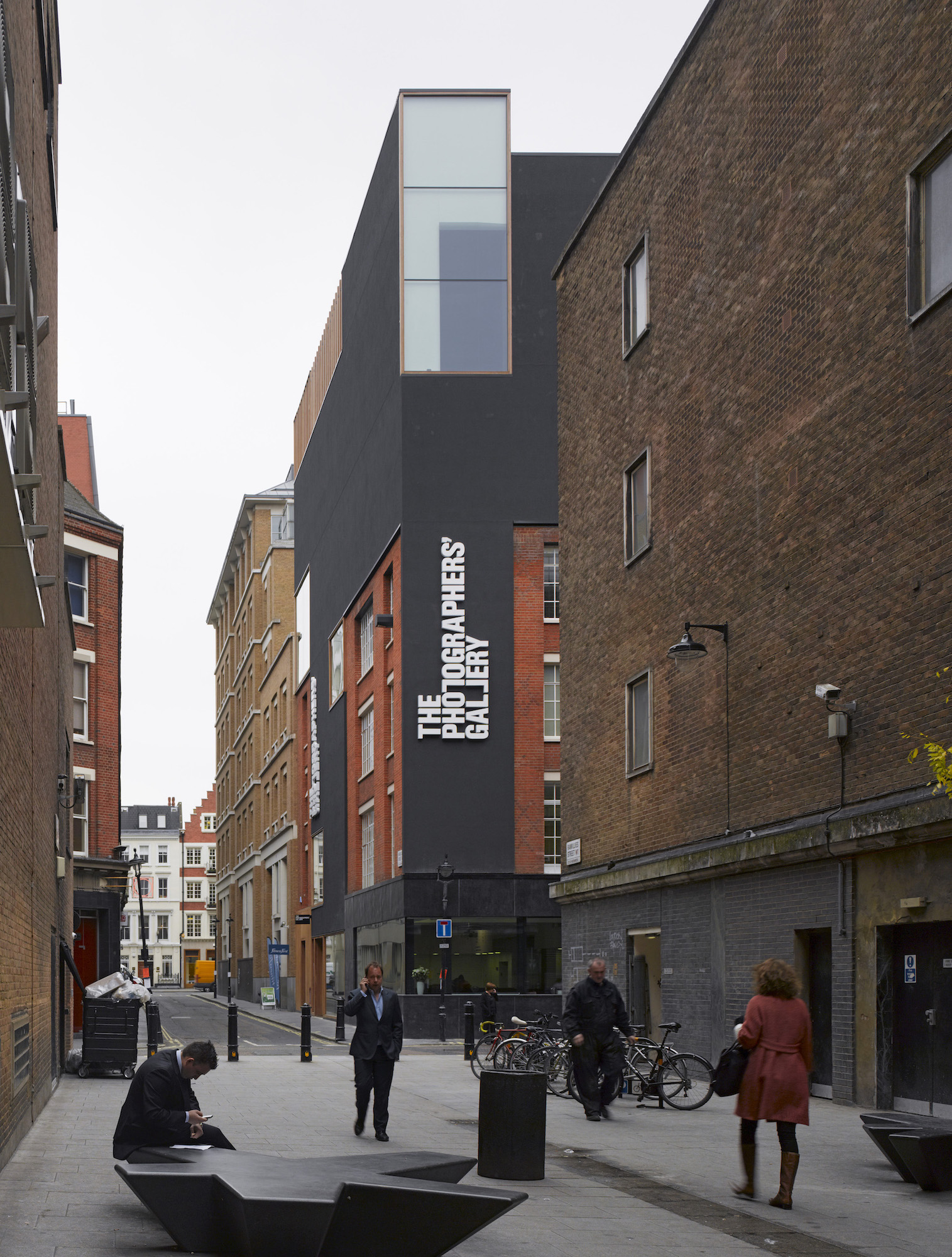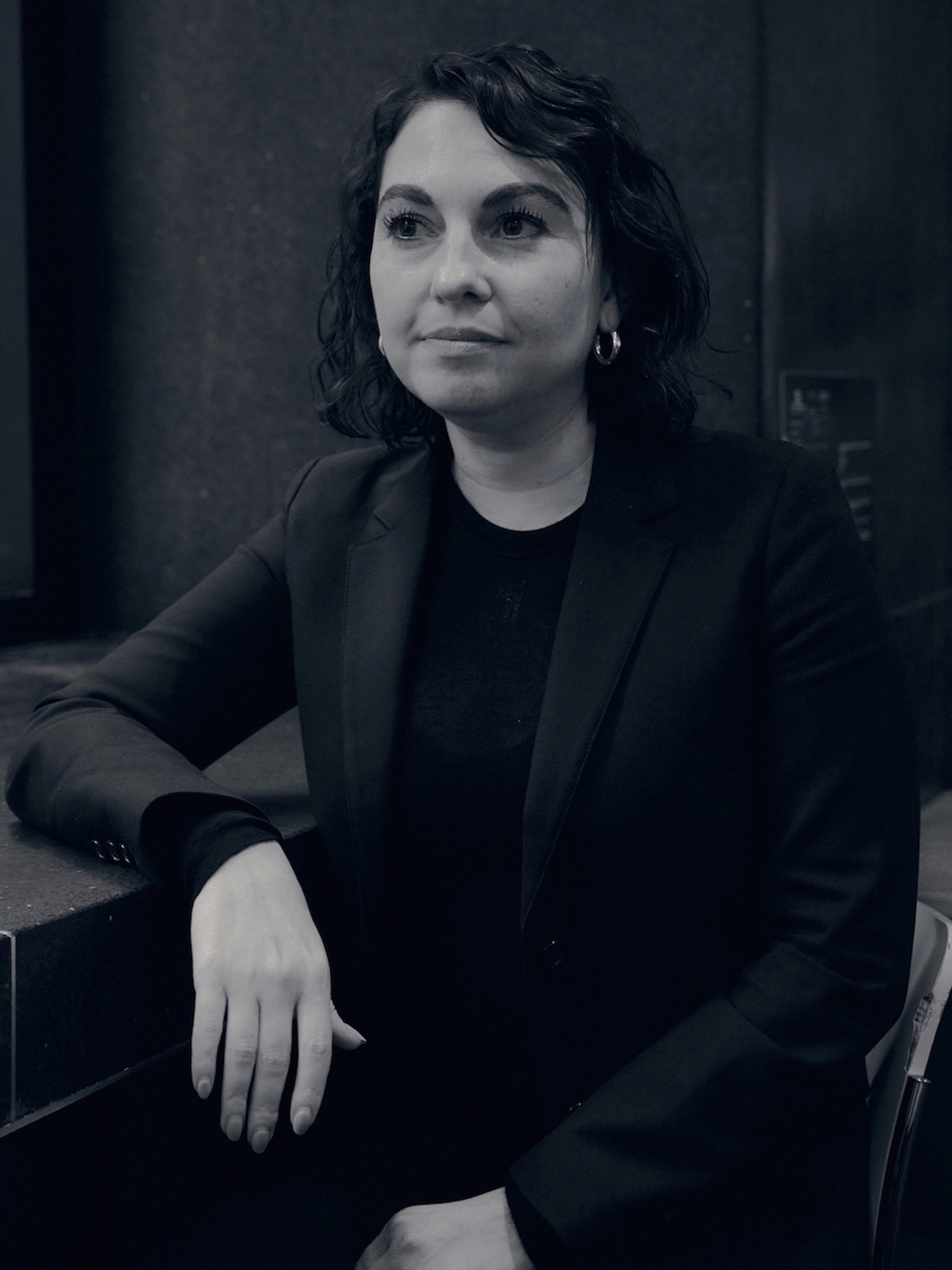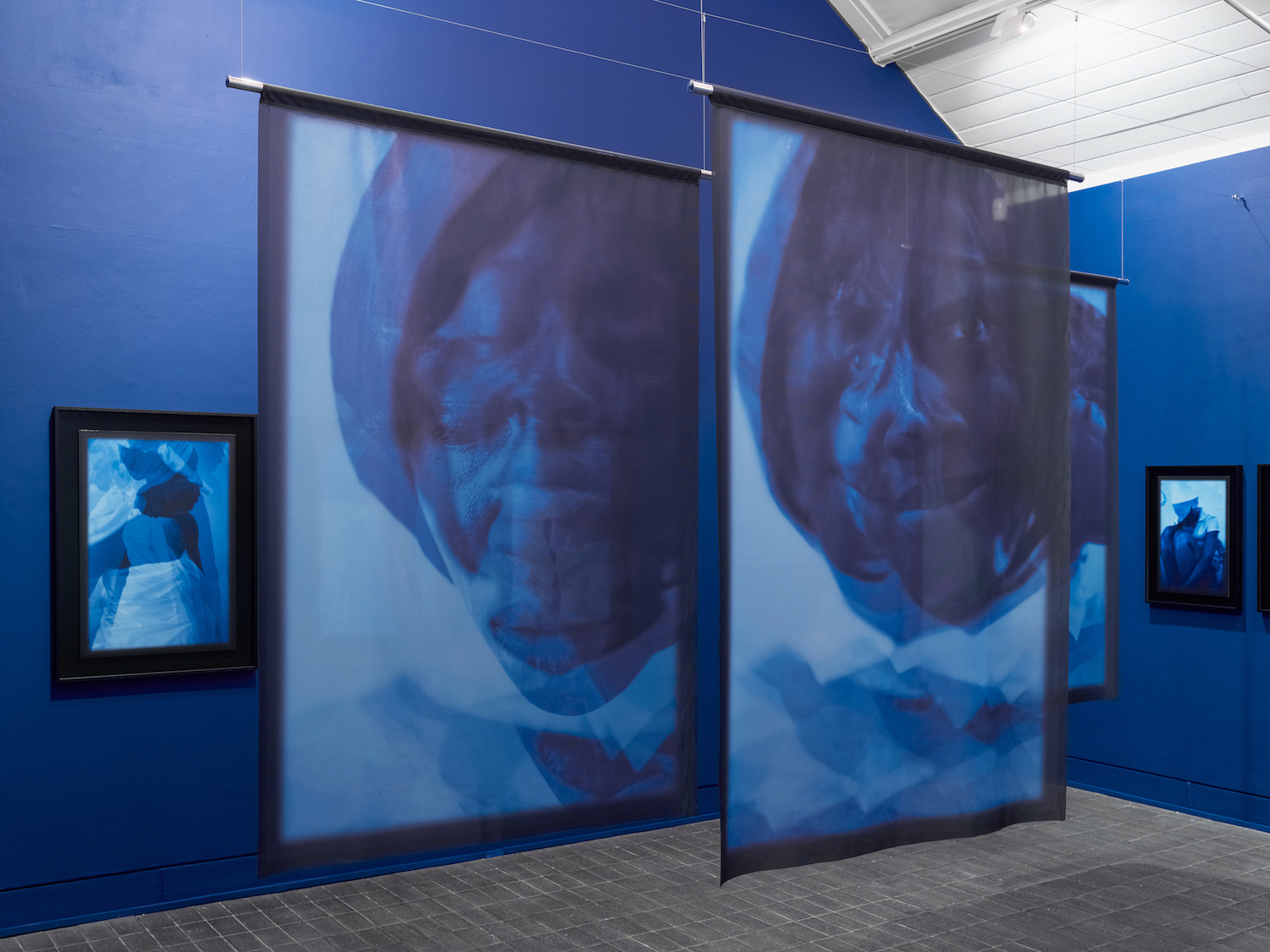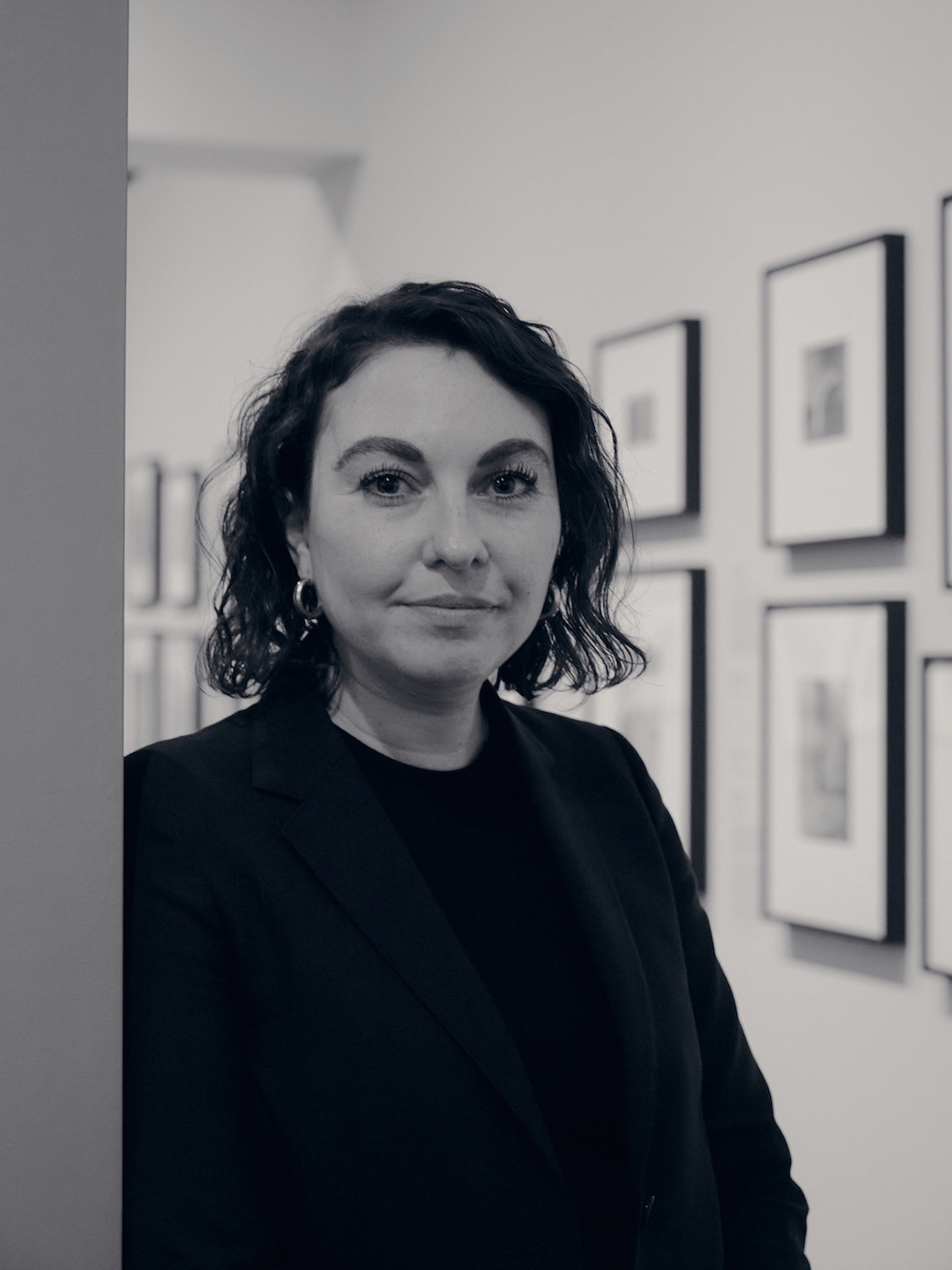Shoair Mavlian at TPG © Poppy Thorpe
This article is printed in the latest issue of British Journal of Photography: Performance. Sign up for an 1854 subscription to receive it at your door.
The new director talks about her darkroom upbringing in Sydney, life as an intern, and her transparency drive at the UK’s most prestigious photography institution
“The world is designed for men, and that filters through everything – it filters through life and work,” says Shoair Mavlian, who became the fifth director of The Photographers’ Gallery (TPG) at the start of this year. Gender inequality in the industry is no secret. Globally, around 75 per cent of photography students are women, yet they account for only 15 per cent of professional photographers. Historically, The Photographers’ Gallery has bucked this trend. The institution was founded by a woman (Sue Davies, in 1971) and in its five-decade history, four out of five of its directors have been women. The institution has always championed women artists too, exhibiting group shows devoted to their work long before it became more normalised.
“There’s an amazing legacy there,” says Mavlian, speaking from TPG’s office, which occupies the third floor of the Soho gallery. Mavlian is passionate about the institution’s history – “Over 50 years of incredible work and incredible teams” – but she is also driven by the prospect of reshaping its future. She identifies funding, accessibility, transparency and inequality as some of the challenges facing arts institutions today. These are issues she has grappled with across several roles at different organisations over the last 14 years, including the National Portrait Gallery, Tate and Photoworks. But the roots of her career in photography go even further back.

She was raised in Australia by an Armenian father and British mother, spending most of her childhood in Cannes before relocating to Sydney as a teenager. It was there that she first discovered photography, working shifts at her uncle’s minilab. “My introduction to photography was in the darkroom,” she says, “but I always saw it as a technical profession, I didn’t really understand it as a medium until much later on.” Still, developing thousands of photographs as a teenager gave Mavlian an early exposure to the craft that would come to shape the course of her career.
Mavlian obtained a BA in visual arts at University of Sydney, and then an MA in history of art at Birkbeck, University of London. She landed her first roles in 2008 as an intern for the press office, first at the National Portrait Gallery and then TPG. Both stints lasted less than a year, but they gave the then-24-year-old graduate an understanding of how museums operate.
“I was interested in any way that I could work in a museum,” says Mavlian, who developed a fascination with how spaces are filled and curated. Later that year, Mavlian joined Tate Britain as project assistant, and in 2011 she relocated to Tate Modern as assistant curator, helping Simon Baker – now director of the Maison Européenne de la Photographie (MEP) – build its first photography collection. “It was an incredible experience,” says Mavlian. “It was a museum that had been around for over 100 years, but they hadn’t had a photography collection. It was rare and unusual.”

“What Photoworks allowed me to do was challenge the idea of what photography is… but also challenge the idea of curating and exhibition models”
It was at Tate that Mavlian carved her identity as a curator. Working closely with Baker, she co-curated exhibitions including Shape of Light: 100 Years of Photography And Abstract Art in 2018 and Don McCullin’s celebrated retrospective the following year. “Simon has been an incredible mentor… When you work in an institution, you very rarely do anything on your own. It’s always a collaboration with colleagues,” she says. “Simon was very generous in that respect. And I try to pass that on, and be generous with colleagues that I work with as well.”
As an emerging curator, Mavlian also found role models across the Atlantic – Anne Tucker at MFA Houston, and Sandy Phillips at SFMOMA, for example – who had “built incredible museum collections and transformed how museums looked at photography”. Ultimately, however, it was the artists that had the biggest impact on her. Developing an interest in work by “older women who had been overlooked”, Mavlian built a close relationship with Ursula Schulz-Dornburg. Since 2011, she has curated several exhibitions of her work, most recently for MEP in 2019.
“Working with people like that was instrumental in the way that I thought about the broadness of the history of photography, and the fact that there’s still so much missing from that history,” says Mavlian, who cites Susan Meiselas, Claudia Andujar, Dayanita Singh and Catherine Wagner as other artists who have profoundly influenced her. “I’m grateful for the time they gave me as a young curator,” she says.
In 2018, Mavlian took a leap into a whole new territory. After almost a decade at Tate, she was appointed director of Photoworks, a registered charity that adopts a more experimental approach to the medium. The organisation does not have a collection or a permanent space, and focuses on early and mid-career photographers.
“What Photoworks allowed me to do was challenge the idea of what photography is… but also challenge the idea of curating and exhibition models,” says Mavlian. “I was never going to have a building as amazing as Tate Modern. So if that was the case, then why would you try and make traditional shows in spaces that aren’t traditional galleries?” Under her tenure, Photoworks established its annual, portable Festival in a Box, and partnerships with organisations such as Jerwood Arts, Historic England and English Heritage.

Access and transparency were also key concerns that Mavlian addressed during her directorship. Since 2020, Photoworks publicly lists its artist fees and the annual salary of its highest-paid full-time member of staff (£40,000) on its website. Talking about pay is still a taboo subject in many industries. But who does this secrecy benefit, other than the people at the top? “I’m an advocate for transparency. I don’t like this idea of things being ‘insider’s knowledge’. In order for a public institution to run well, it should be transparent,” says Mavlian. “Unfortunately, artist fees across the board are quite low. But I wanted people to try and make a connection between what the director is being paid, to show that it’s relative.”
New challenges concerning equality rose to the surface when the pandemic hit in 2020. Photoworks was already a remote organisation, so it experienced minimal disruption in that sense, but “what actually had the most impact on the organisation was the resurgence of Black Lives Matter and the social and political knock- on effects of that,” says Mavlian. “That led to a series of questions within the art world that need to be answered… Photoworks had already started doing a lot of that work, but the museums and galleries around the world will continue to try and answer those questions.”
Mavlian has a well-rounded understanding of the industry’s anatomy – one that was obtained from the bottom up – and after working at one of the UK’s largest art institutions and leading a smaller, experimental organisation, TPG feels like somewhere in-between. “As much as not having a building is a great model, I’m also excited to get back into a building,” she laughs. “London is one of the greatest cities in the world. I’m excited about this space in central London, and what the space can be and who it can be for.”
Mavlian is also looking forward to opening up conversations about the challenges facing arts institutions. “They’re difficult conversations, but this is a moment in history where we can really think, ‘OK, this is what The Photographers’ Gallery was for the first 50 years, what is it going to be like for the next 50 years? And how can we set the organisation on that path?’… We can’t just go back to the way things were [before the pandemic]. We have to think about what kind of future we want. For institutions, for cultural spaces, and for photography in general.”

